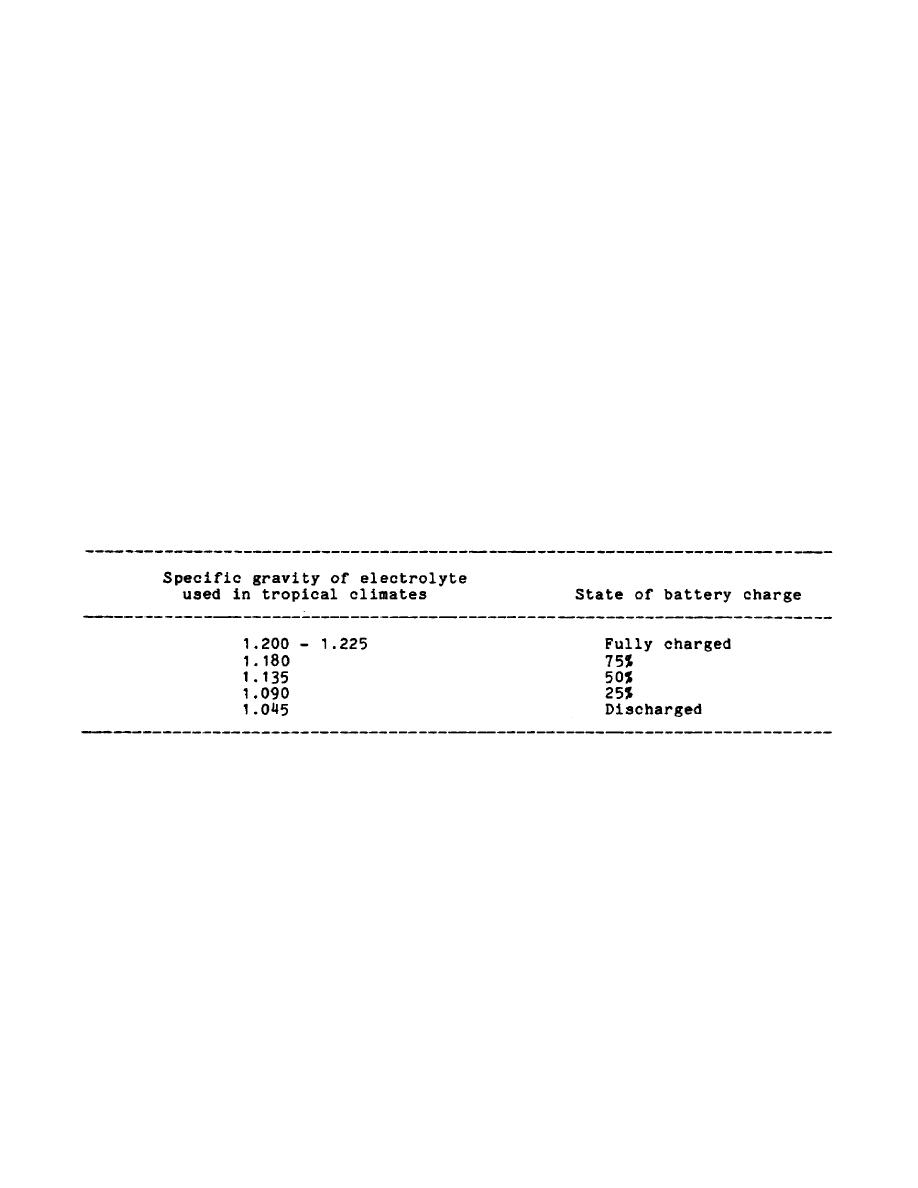
c. The high temperatures found in the tropics create their own maintenance
problems that you will have to adjust to if you are assigned in one of these areas.
Rapid evaporation of the water will result due to the heat, so keep a close watch
on the electrolyte level. Every effort should be made to keep the compartment, in
which the batteries are installed, as cool as possible during and after operation.
Do not obstruct ventilation or the heat will damage the batteries. At high
temperatures the acid in the electrolyte is more active, so using a weaker solution
will give good results and cause less damage to the plates and separators.
d. Electrolyte solution used for tropical climates should have a specific
gravity of 1.200 to 1.225. You will have to weaken the solution yourself. Do this
by drawing electrolyte from supply that is already mixed to 1.280 specific gravity;
then add battery water until the mixture has a specific gravity of 1.200 to 1.225.
You will need to add about 1 quart of water to 1 gallon of electrolyte.
e. If the battery was in use before it was sent to the tropics, change the
electrolyte in the following manner. Make sure that the battery is fully charged
so there will be no acid left in the plates. Then remove the vent plugs and tip
the battery upside down to drain all the old electrolyte. Refill the battery with
electrolyte that has been weakened to 1.200 to 1.225 specific gravity. Be careful
to avoid getting any of the electrolyte on yourself or your clothes. The acid can
cause painful burns and will eat holes in your clothing.
f. Figure 8 shows various specific gravities and the state of charge for
batteries that contain weakened electrolyte for use in the tropics. When the
electrolyte in a battery has been weakened, a tag showing the full charge specific
gravity should be attached to the battery. These batteries should also be
identified by painting a white dot about 1 inch in diameter on the top of the
battery where it can be easily seen. Do not put the paint on top of the service
date that is stamped on the battery.
Figure 8.
Tropical use.
7.
BASIC METER CIRCUITS.
a. Unit personnel are not responsible for the repair of any major
electrical malfunctions. Most electrical components are repaired and replaced by
direct support maintenance personnel. Organizational maintenance personnel should,
however, be familiar with the electrical wiring diagram and basic circuits which
are likely to malfunction. They can greatly assist direct support maintenance
personnel by reporting equipment malfunctions in detail and by isolating the
problem when possible.
OS 010, 7-P11




 Previous Page
Previous Page
